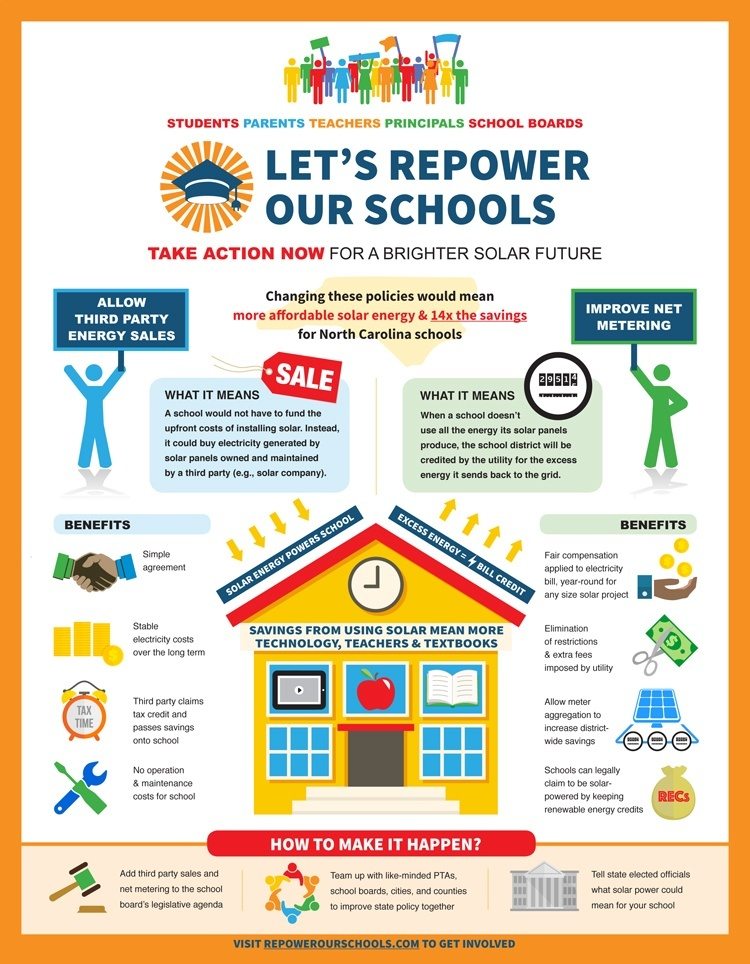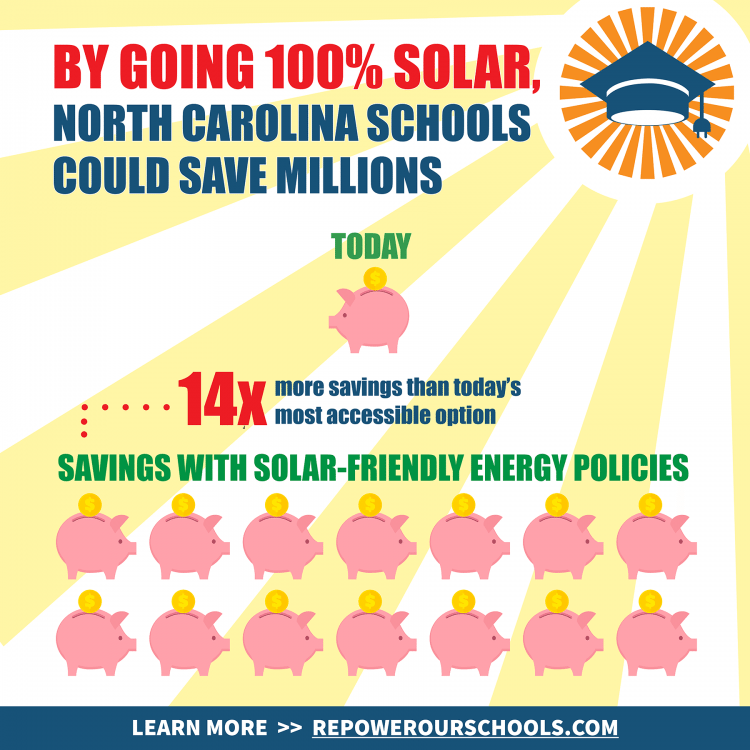This article was originally published by EcoWatch on February 3, 2015 and is re-posted here with permission.
Two reports, released today by the North Carolina Clean Energy Technology Center and commissioned by the Repower Our Schools coalition, found that two North Carolina school districts can go 100 percent renewable.
The North Carolina Clean Energy Technology Center, based at NC State University, found that Charlotte-Mecklenburg Schools and Durham Public Schools can meet 100 percent of their electricity needs and save millions over the next 25 years by installing solar panels to power their schools immediately.
Reducing energy costs is a smart way to direct more money into the classroom, where it’s needed most. Utility bills are the second largest expense for school districts after personnel costs, according to the U.S. EPA.
With more solar-friendly policies in the state, including third party energy sales and improved net metering, the school districts’ savings would jump 14 times compared to the current benefits of going solar. North Carolina is one of only a handful of states with a legal gray area that effectively blocks purchasing electricity from anyone but the utility.
Solar policy improvements could save $54.6 million for Charlotte-Mecklenburg Schools and $16.3 million for Durham Public Schools over 25 years, an 11 percent savings over what they pay for electricity now, with minimal upfront costs. The savings over 25 years would be equivalent to 1,357 annual starting teacher salaries for Charlotte-Mecklenburg Schools and 414 for Durham Public Schools, which is a substantially smaller school district.
Here’s an infographic that explains the benefits of third party energy sales and net metering:

Allowing third party energy sales and improving net metering would make solar energy more affordable for North Carolina schools and increase savings.
Not only does solar save money, it can also be a teaching tool for science, technology, engineering, and math.
“Solar installations at North Carolina schools would bring the jobs of tomorrow into the classroom today,” Dr. Wafa Khalil, a retired science and energy teacher of 23 years based in Durham, said. “Teachers could incorporate solar into the curriculum and let students witness its advantages firsthand.”
The reports recommend that both North Carolina school districts develop plans to move schools toward 100 percent renewable electricity long-term while continuing to make energy efficiency improvements and piloting solar projects today.
Parents, teachers and students who want to see their school districts go solar for the health, environmental and economic benefits can take action by calling on their school boards to transition to 100 percent renewable electricity.



